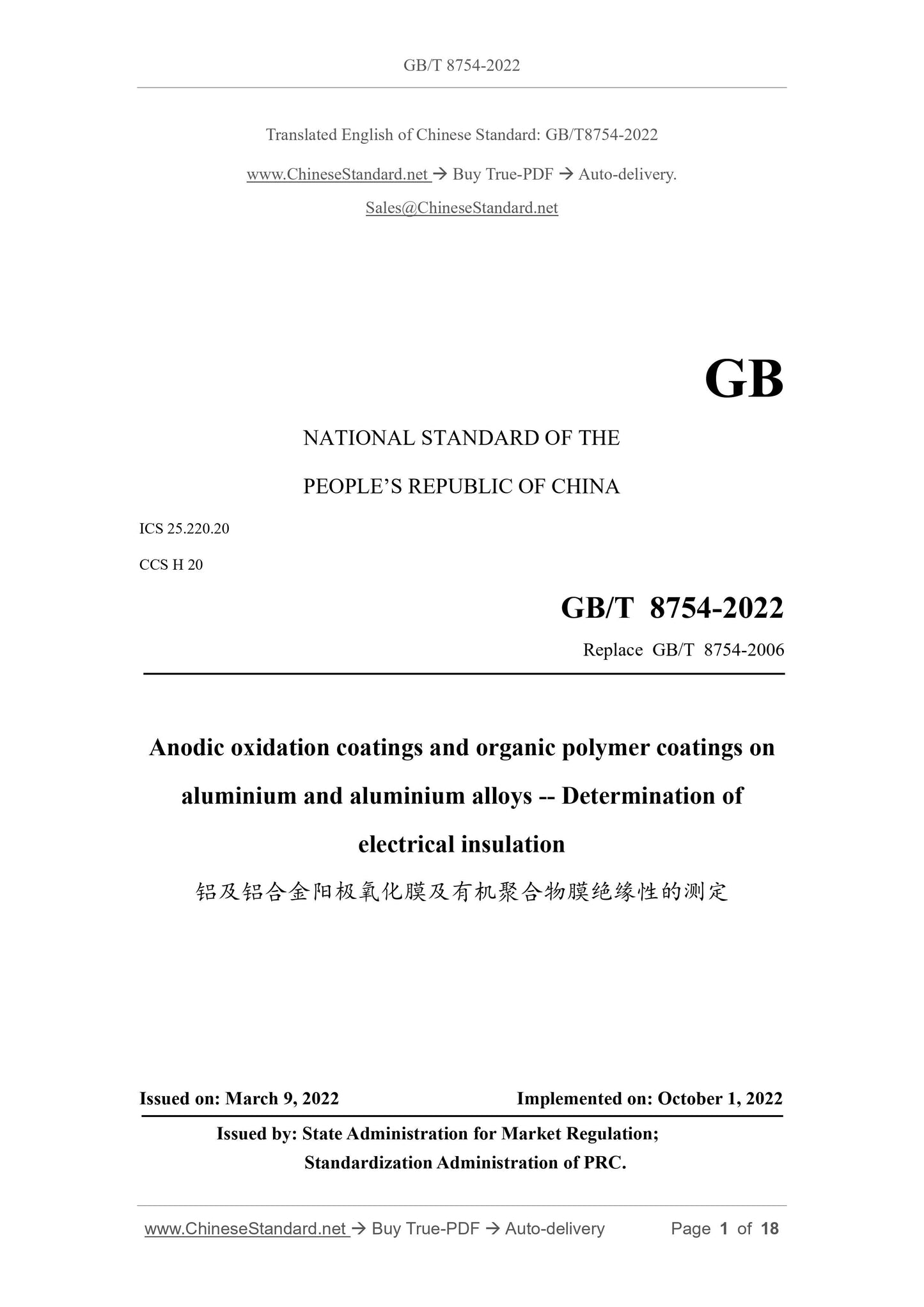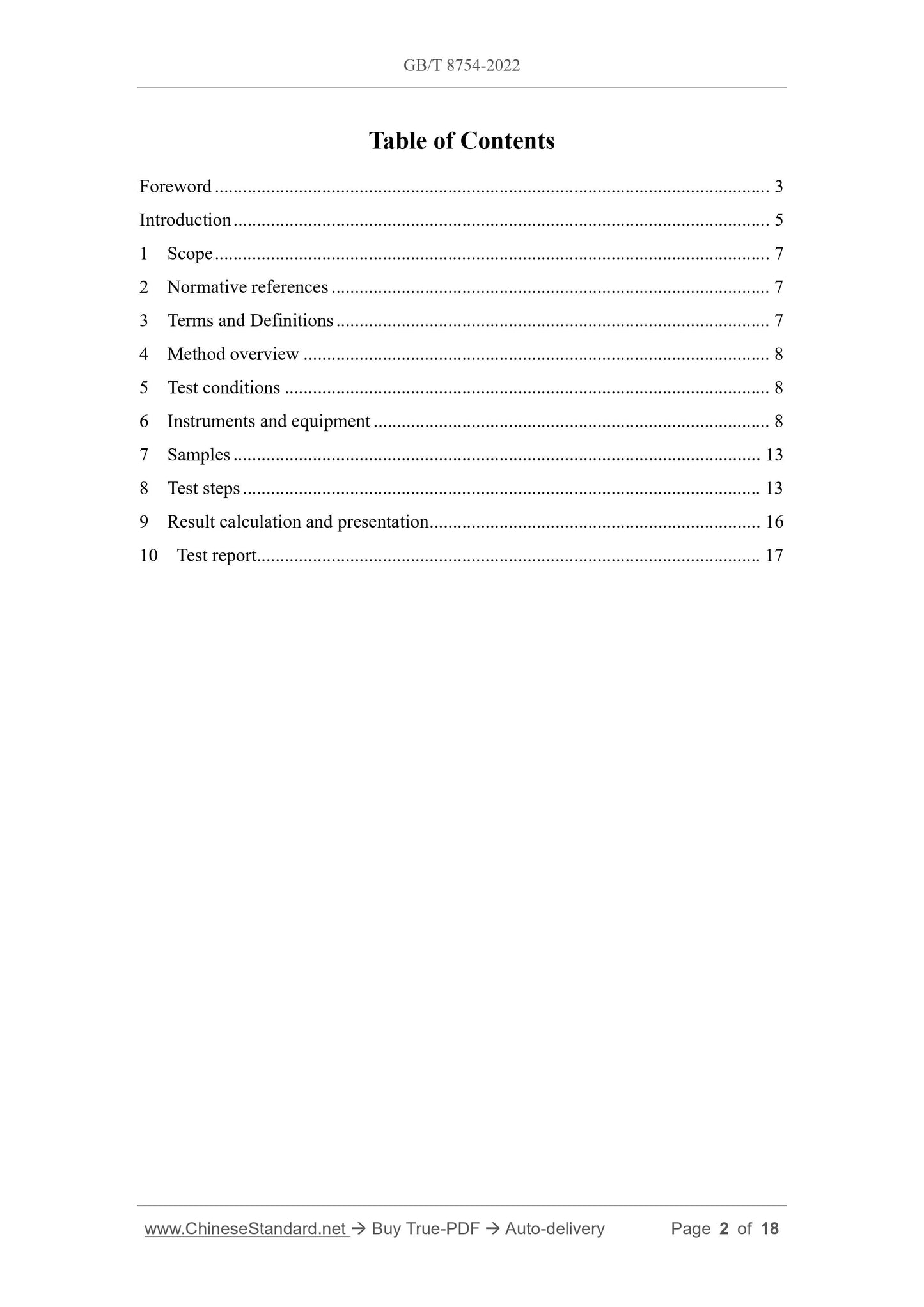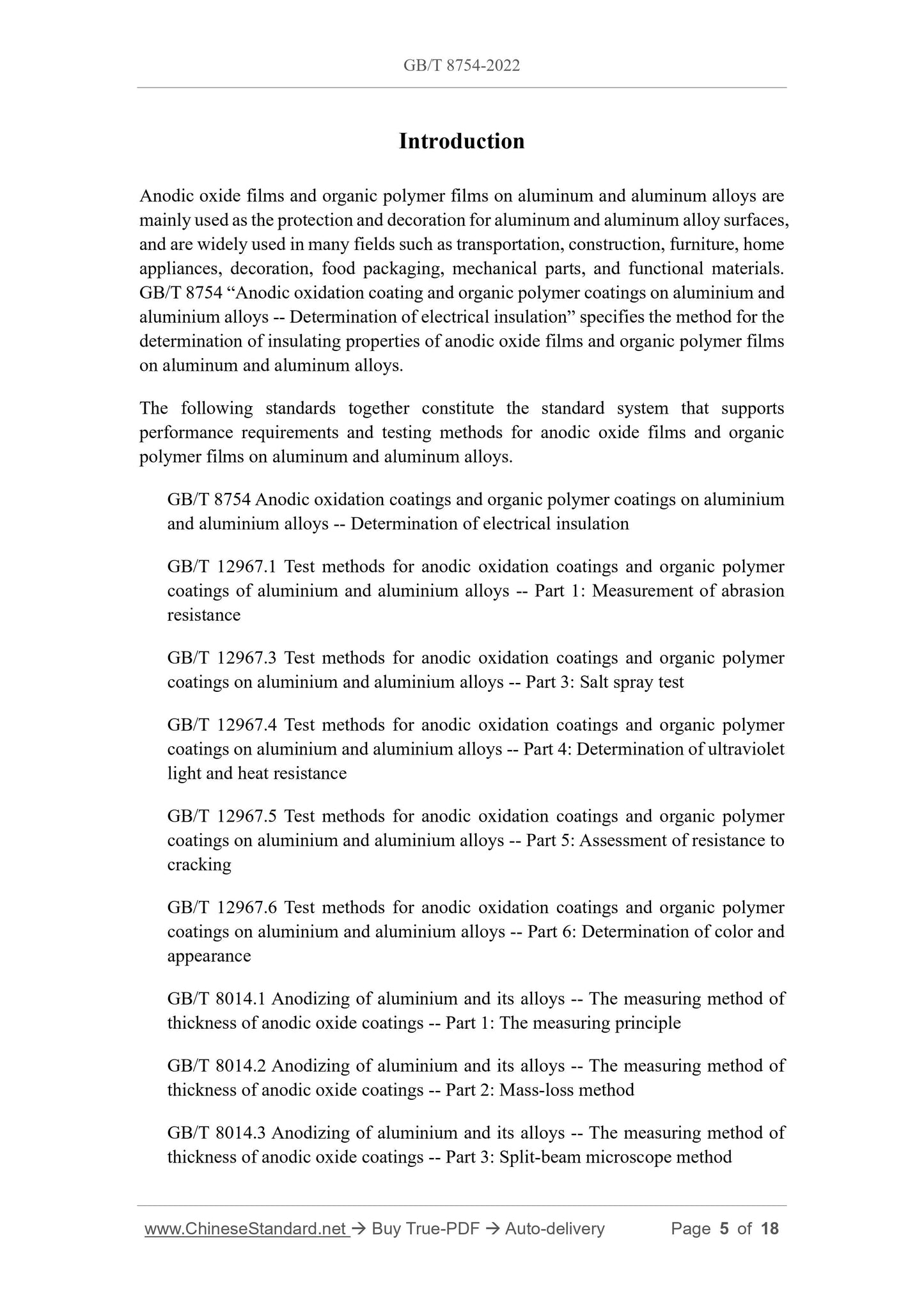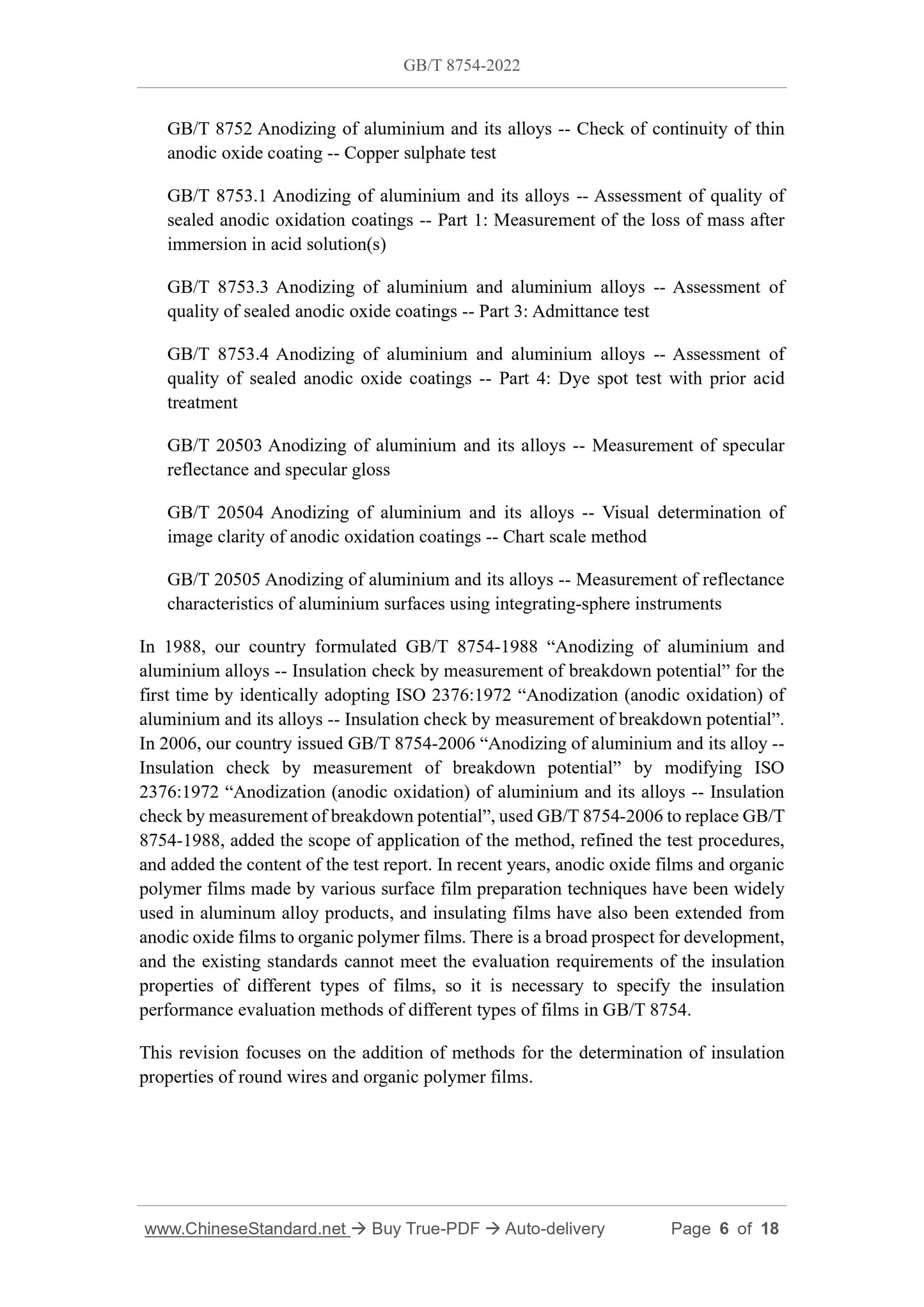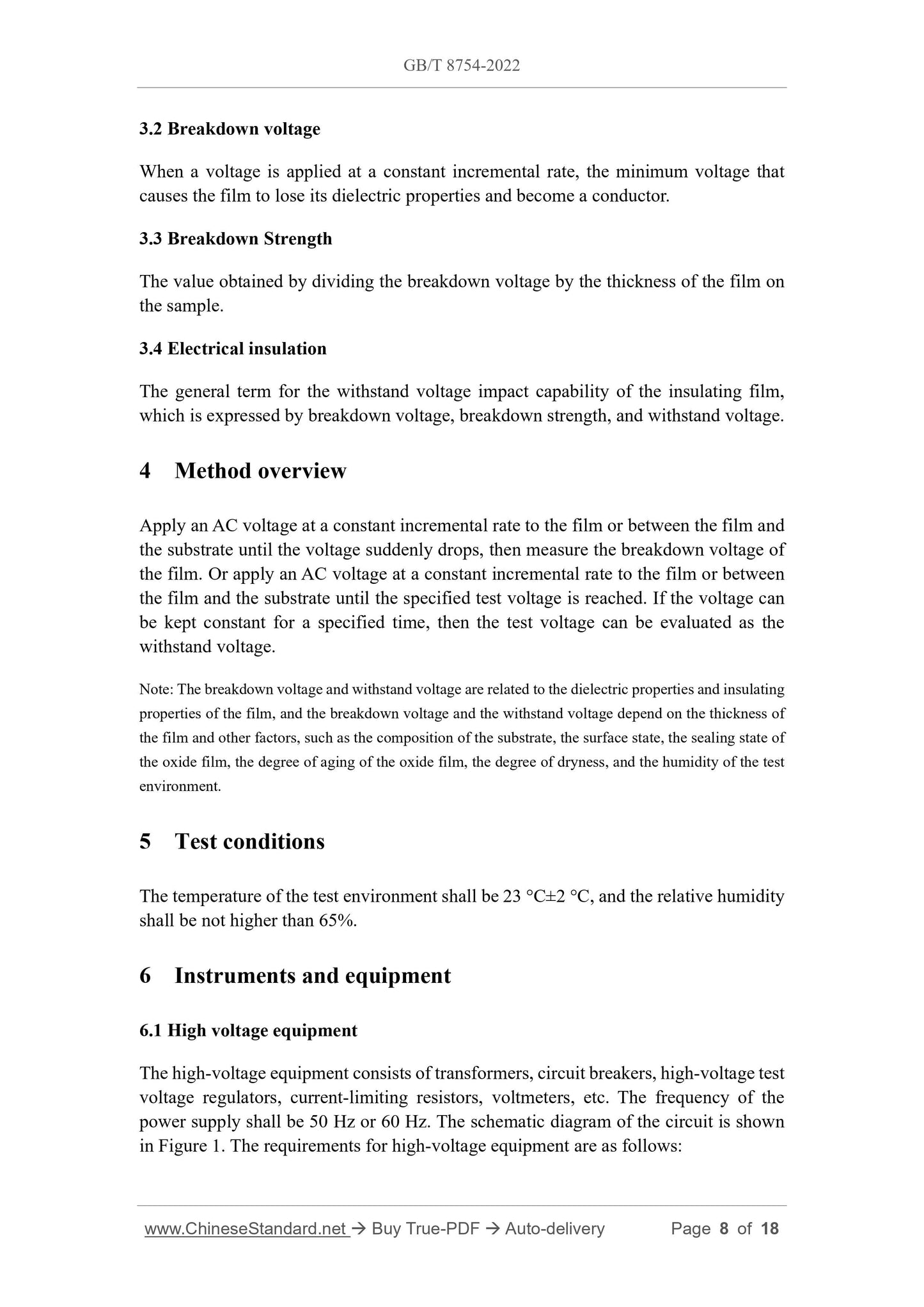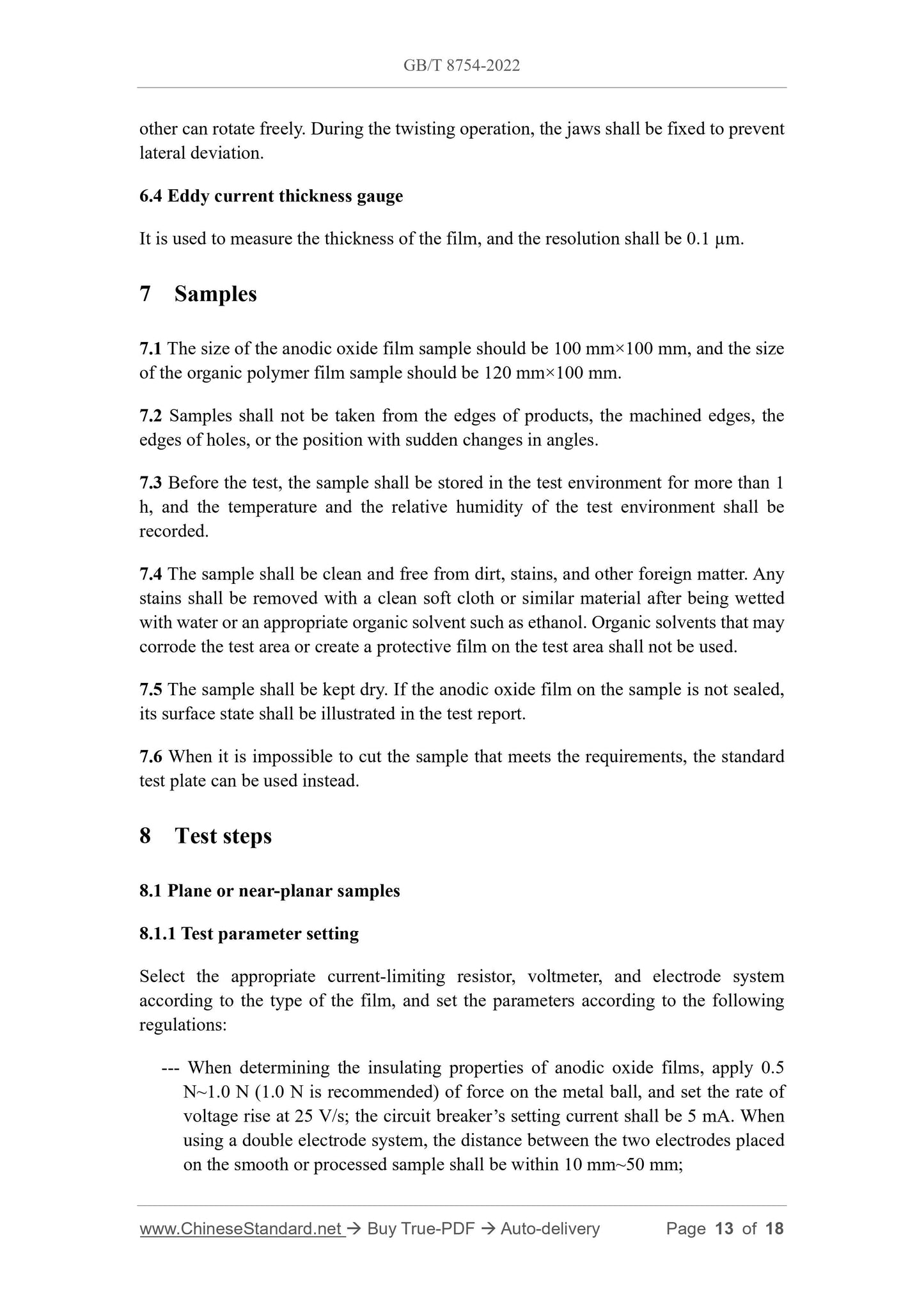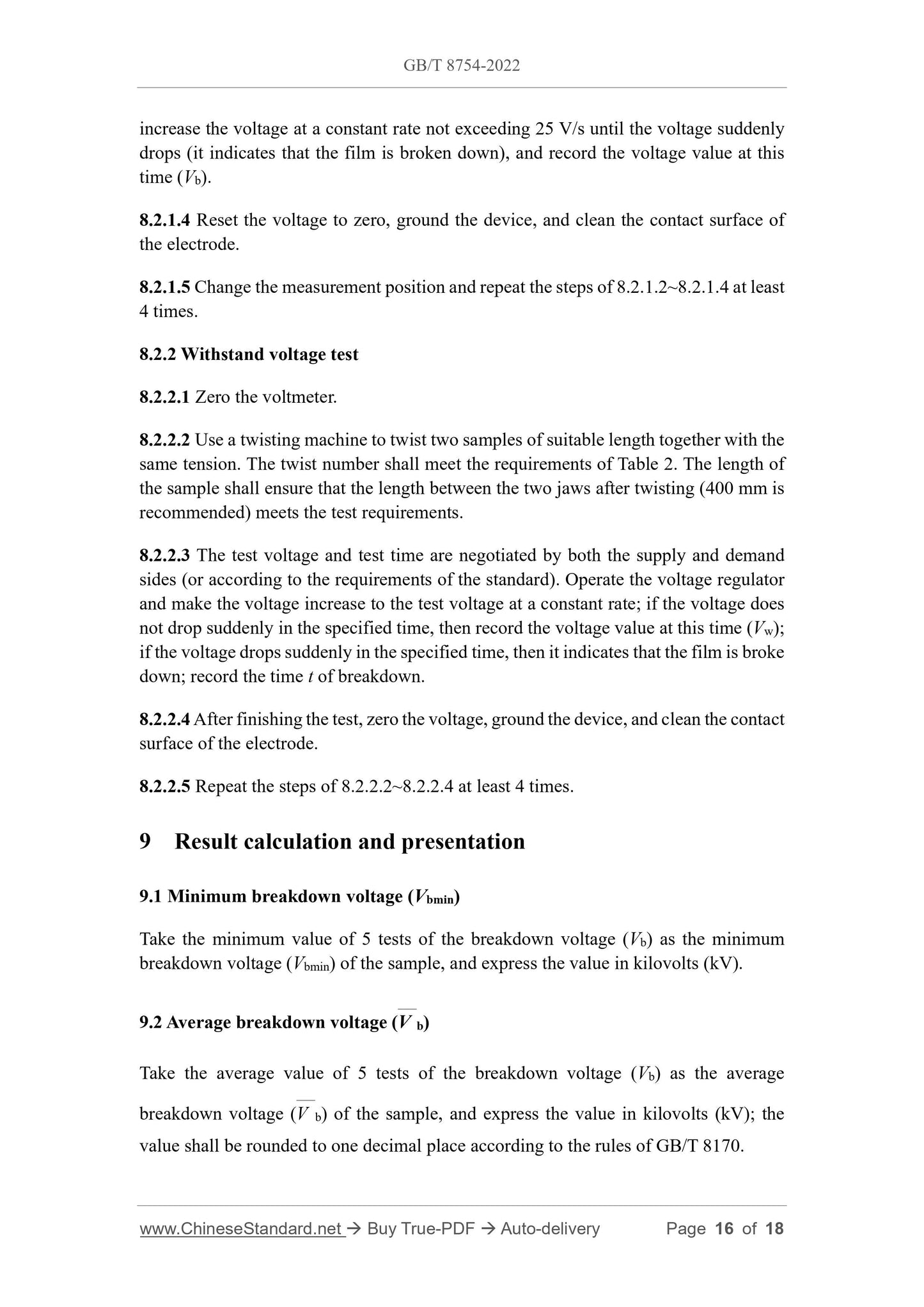1
/
of
7
www.ChineseStandard.us -- Field Test Asia Pte. Ltd.
GB/T 8754-2022 English PDF (GB/T8754-2022)
GB/T 8754-2022 English PDF (GB/T8754-2022)
Regular price
$185.00
Regular price
Sale price
$185.00
Unit price
/
per
Shipping calculated at checkout.
Couldn't load pickup availability
GB/T 8754-2022: Anodic oxidation coatings and organic polymer coatings on aluminium and aluminium alloys - Determination of electrical insulation
Delivery: 9 seconds. Download (and Email) true-PDF + Invoice.Get Quotation: Click GB/T 8754-2022 (Self-service in 1-minute)
Newer / historical versions: GB/T 8754-2022
Preview True-PDF
Basic Data
| Standard ID | GB/T 8754-2022 (GB/T8754-2022) |
| Description (Translated English) | Anodic oxidation coatings and organic polymer coatings on aluminium and aluminium alloys - Determination of electrical insulation |
| Sector / Industry | National Standard (Recommended) |
| Classification of Chinese Standard | H20 |
| Word Count Estimation | 10,191 |
| Issuing agency(ies) | State Administration for Market Regulation, China National Standardization Administration |
Share
